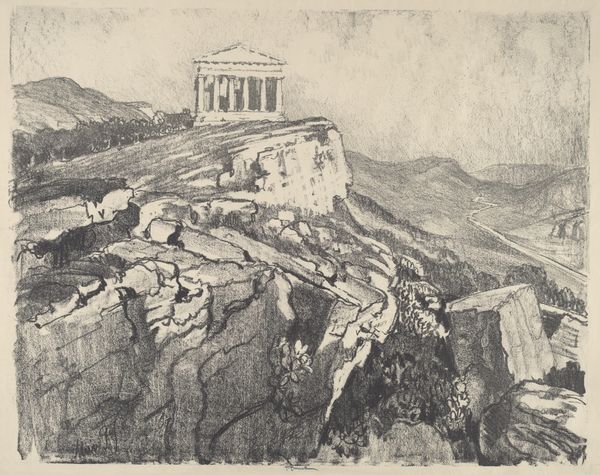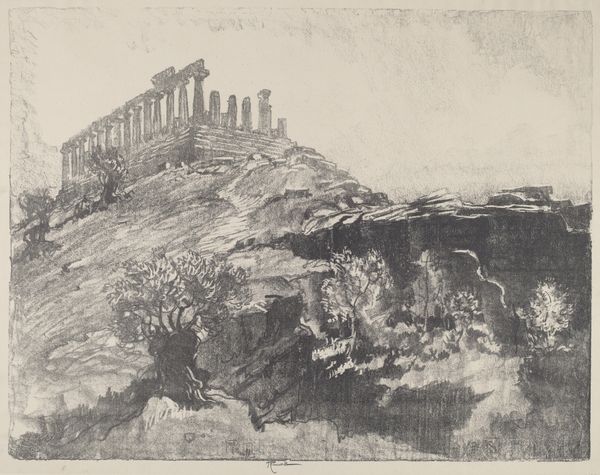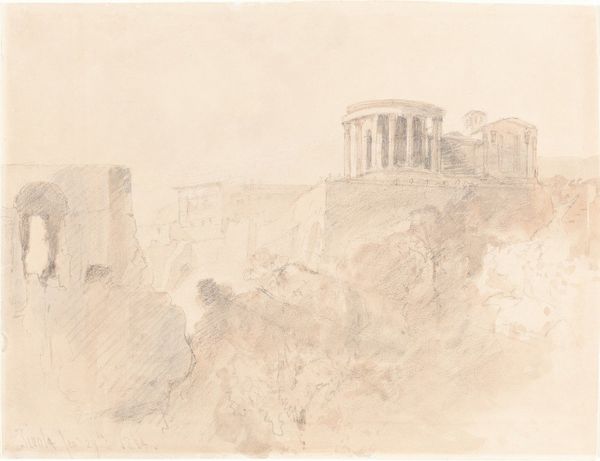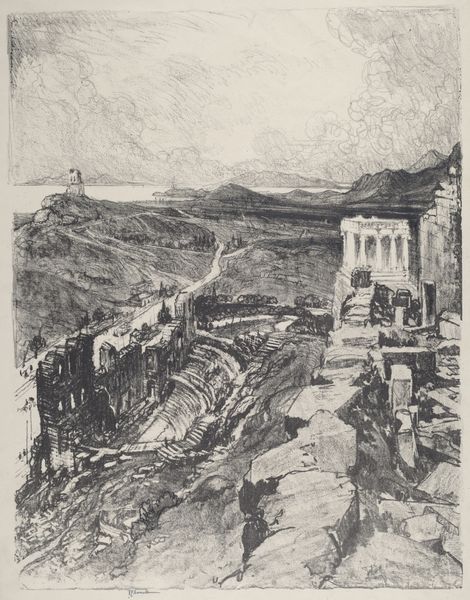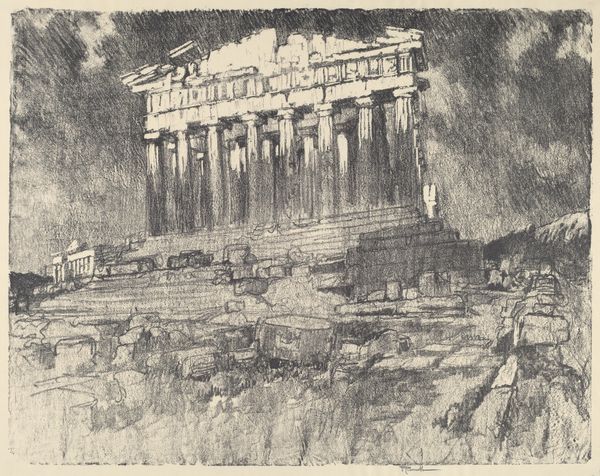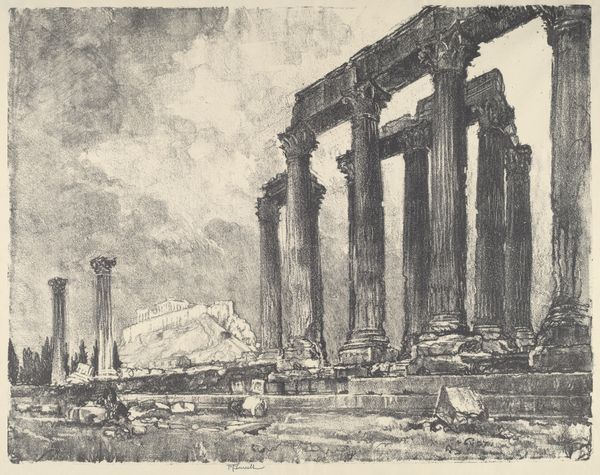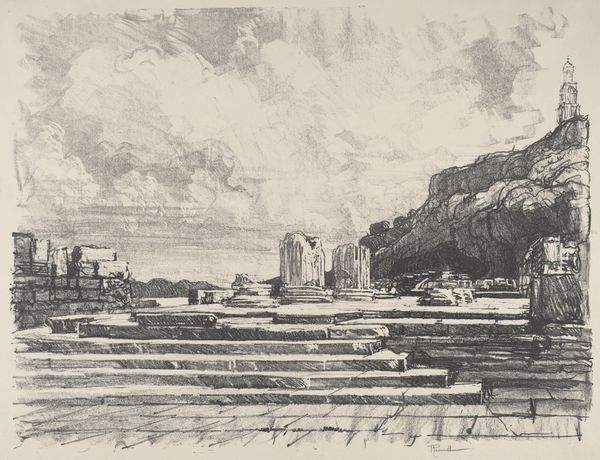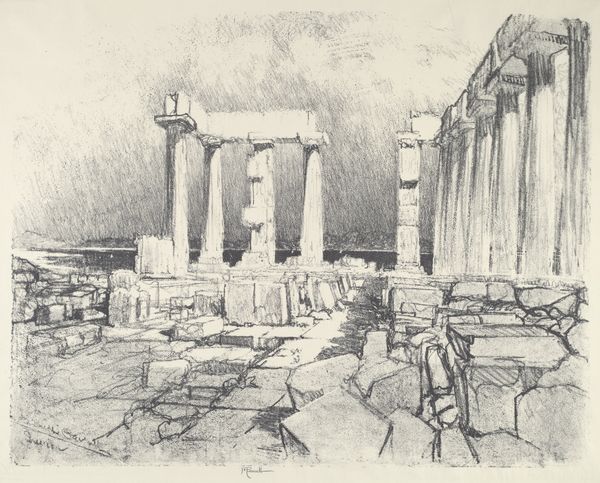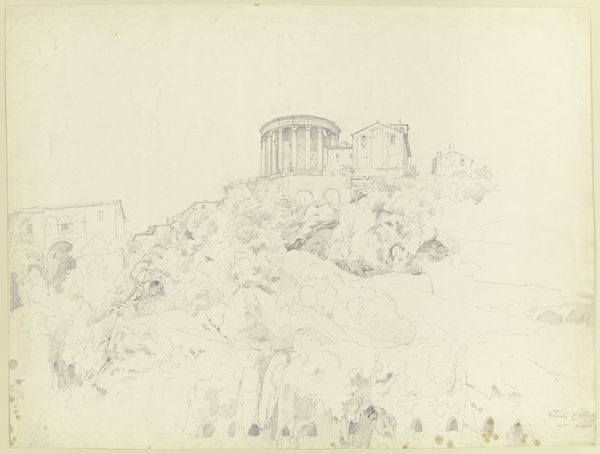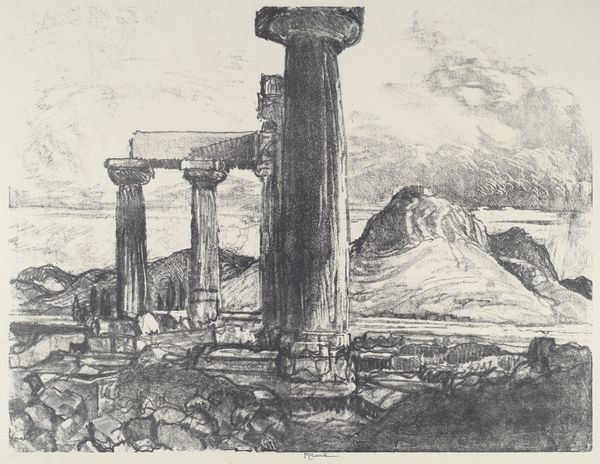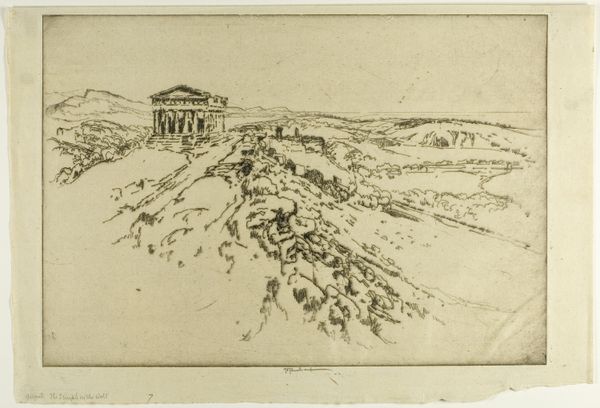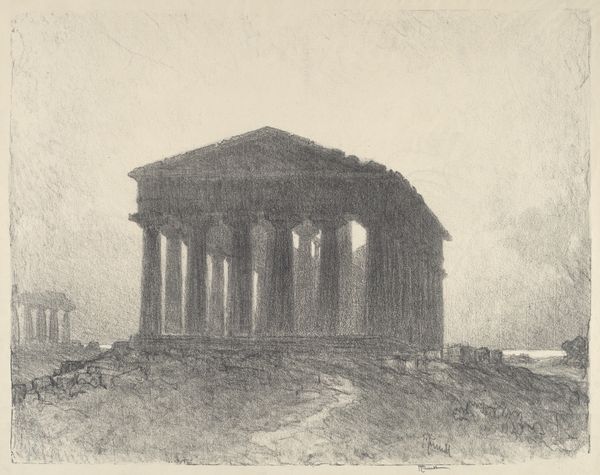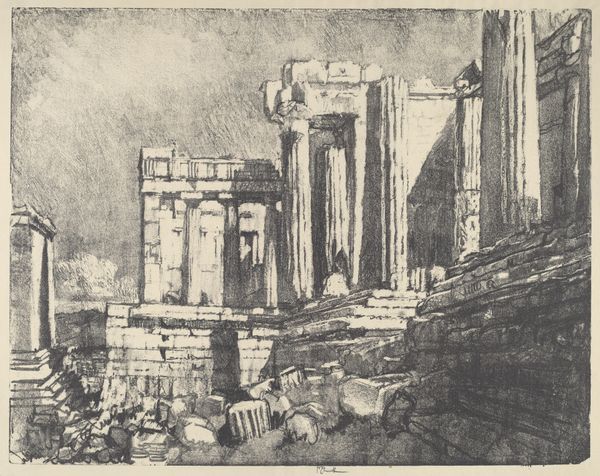
drawing, print, pencil, graphite
#
pencil drawn
#
drawing
# print
#
pencil sketch
#
landscape
#
classical-realism
#
charcoal drawing
#
pencil drawing
#
pencil
#
graphite
#
academic-art
Copyright: National Gallery of Art: CC0 1.0
Editor: So, here we have Joseph Pennell's "The Temples on the Wall, Girgenti," created in 1913. It appears to be a graphite or pencil drawing. I’m struck by the sort of… crumbling grandeur it evokes. How do you interpret this work, especially given its historical context? Curator: This image speaks volumes about the complex relationship between power, history, and representation. Pennell's choice to depict these temples, remnants of ancient civilizations, at the beginning of the 20th century invites us to consider the legacy of colonialism and the appropriation of cultural heritage. What does it mean to depict these classical ruins at a time when Europe was on the brink of immense upheaval? Editor: That’s a perspective I hadn’t considered. It makes me think about whose narrative is being prioritized. Are we meant to admire the beauty of the past, or critique the systems that led to its decline and our contemporary view of it? Curator: Exactly. And consider the visual language: the crumbling structures, the stark light. Pennell, as an American expatriate, was likely influenced by European aesthetics, which had its own complex history of cultural dominance. It begs the question, whose gaze are we seeing Girgenti through, and what biases might be embedded within that perspective? Do you feel that the medium itself - drawing - affects how we see the structures depicted? Editor: I think the drawing style makes it feel more immediate, more like a personal interpretation, rather than a grand, idealized depiction. Perhaps it’s an attempt to humanize these imposing structures, but maybe it’s also still filtered through his own experience. I appreciate that this has made me question my initial reading of it. Curator: And that's precisely the point, isn't it? Art doesn't exist in a vacuum. Exploring those connections - between the artist, the subject, and the viewer - unveils the deeper, often uncomfortable, truths that artworks can hold. Editor: Thanks! It’s so helpful to think of art history as an active dialogue with the past and present.
Comments
No comments
Be the first to comment and join the conversation on the ultimate creative platform.
